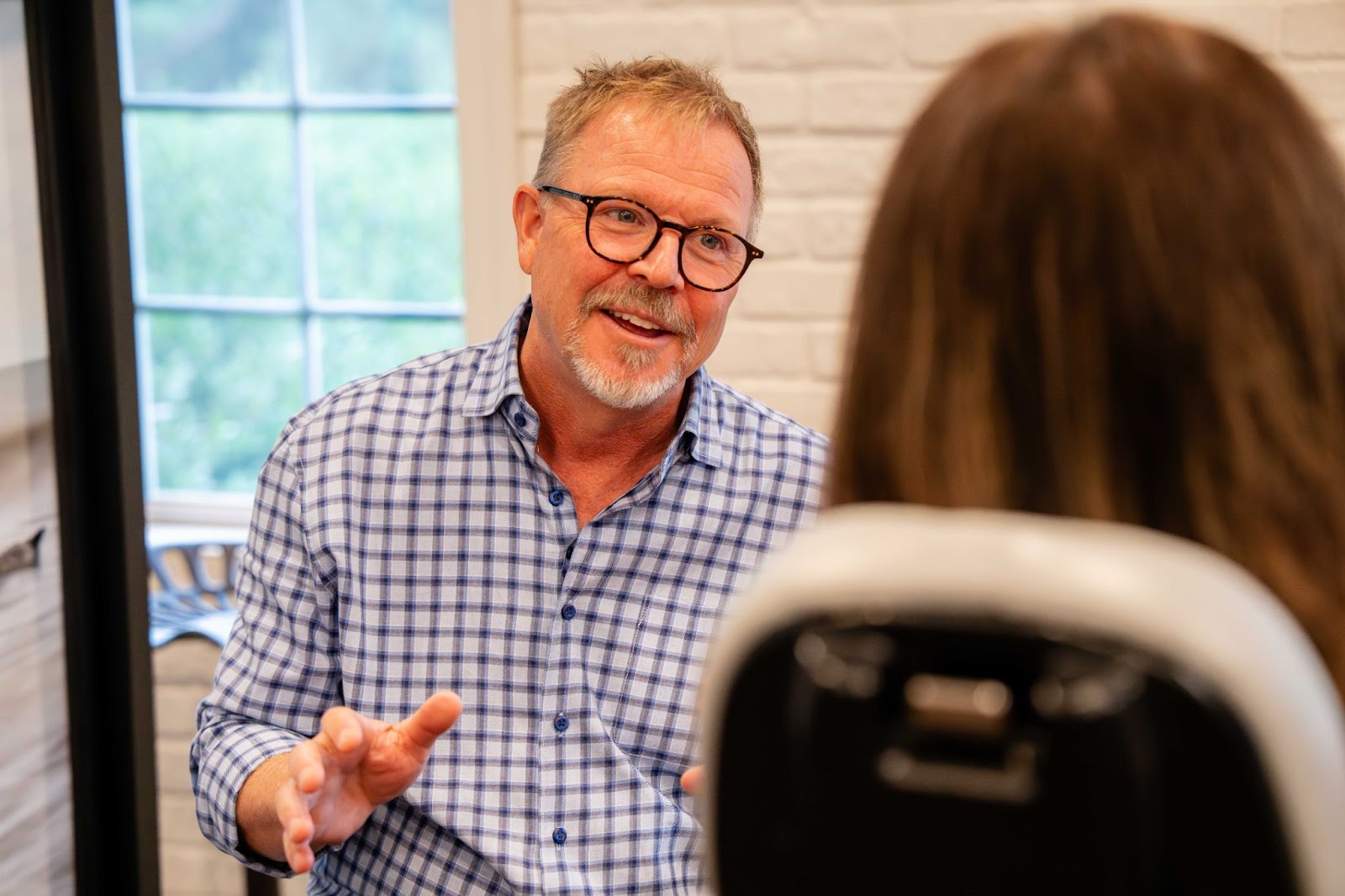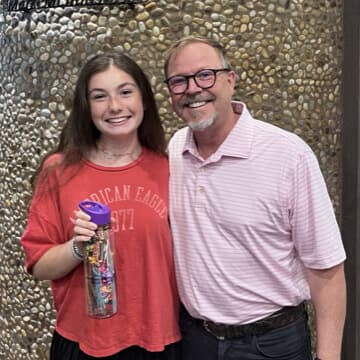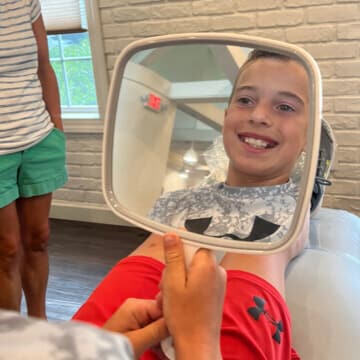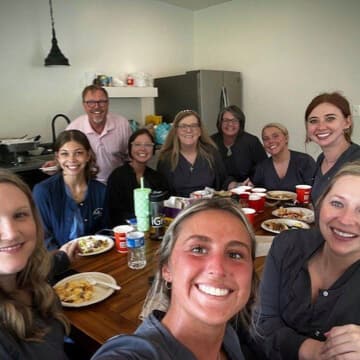Orthodontics gives you another way to tackle snoring and sleep apnea. Dr. Mark McInnis of Upstate Orthodontics, with offices in Clemson and Seneca, wants you to know exactly how it compares with the familiar CPAP machine. In this guide, you’ll learn about how metal or clear braces, aligners, jaw motion devices or how orthognathic surgery can open your airway. Plus, we’ll explore CPAP devices and Inspire® implant therapy as options to keep you breathing easily all night.
Sleep Apnea 101
Obstructive sleep apnea (OSA) happens when the soft-tissue “tube” at the back of your throat collapses during sleep. You might snore loudly, wake up gasping, or drag through the day even after “a full night’s rest.”
A different condition, central sleep apnea (CSA), occurs when your brain briefly stops sending the signal to breathe, so airflow pauses even though nothing is blocking the airway. Some patients develop complex sleep apnea, a mix of OSA and CSA that can appear after starting CPAP therapy.
The first step is diagnosis because the symptoms overlap, an orthodontist like Dr. McInnis may recommend a sleep study: either an in-lab polysomnogram or a supervised home test. The data show how often you stop breathing, how low your oxygen drops, and whether the pauses are obstructive, central, or both, information that drives every treatment decision that follows. Our Upstate Orthodontics team can refer you to a number of sleep specialists in Clemson and Seneca. It’s always best if we take a multidisciplinary approach to helping you with sleep apnea.
How CPAP Works and Why It Leads the Pack
A CPAP is a non-invasive way to produce gentle airflow to help your airway remain open all night. When worn consistently, CPAP can reduce apnea events by 73%, protect your heart, and help you achieve deep, restful sleep. Still, many users in Clemson and Seneca struggle with mask leaks, machine noise, or the feeling of forced air. Proper mask fittings, heated tubing, and new “auto-titrating” units solve most comfort issues, but roughly one-third of users still give up.
If CPAP fails, surgeons may offer Inspire® hypoglossal-nerve stimulation. It’s a pacemaker-like implant under the collarbone that moves the tongue forward with every breath. Inspire is promising, yet long-term data remain limited, and it involves minor surgery plus battery replacements every decade or so.
Can Orthodontics Help the Airway?
Yes! But only when it matches the true cause of the obstruction. Orthodontic records alone cannot diagnose you with sleep apnea. Orthodontics identifies skeletal patterns that narrow the airway, co-manages care with sleep physicians, and sometimes shifts jaws to make more breathing room. Braces or aligners alone can not cure adult OSA, but they can support other therapies by aligning teeth. Our Upstate Orthodontics team can help to diagnose and offer treatments that can cure sleep apnea.
Dental vs. Skeletal Class II and the Airway
When teeth simply lean forward (dental Class II), braces or aligners can move them back without changing the airway much. A skeletal Class II is when the lower jaw is smaller and creates an anatomical obstruction affecting the airway. Dr. McInnis will tell you that moving teeth alone will not fix that pinch point. Growth modification has limited effects on airways. Some patients require jaw repositioning to solve the underlying cause of sleep apnea.
Orthodontic Tools and Their Real-World Impact
Here are some examples of how our team in Clemson and Seneca can use orthodontics to assist in the overall treatment of your sleep apnea.
Mandibular-Advancement Appliances
Sometimes, these appliances are used to correct the dental discrepancy by moving the upper teeth back and the lower teeth forward. Many of these appliances have been used to try to stimulate lower jaw growth. Although they are efficient tooth movers, they have limited effect on jaw growth.These devices hold your lower jaw forward during wear. They open your airway behind the tongue. In adults, they are often used to reduce snoring but may flare lower front teeth or shift bites if worn for too long. Regular orthodontic checks are essential to catch unwanted tooth movement early and adjust forces before permanent bite changes occur. Unfortunately, 40-50% of the patients discontinue wear of these appliances due to discomfort or dental changes. Examples include Herbst, MARA, Twin-Block, and mandibular advancement trays with clear aligners.
Palatal Expansion
Rapid palatal expansion widens the upper arch and nasal floor in growing children, increasing nasal airflow and tongue space. Research shows it can lower apnea events by 30 percent or more in selected kids. In pediatric patients with OSA, we recommend seeing an ENT to evaluate a tonsillectomy and adenoidectomy, as this area of restriction could be the cause. For adults, skeletal expansion requires surgically assisted techniques, and any airway gains may diminish over time without additional jaw advancement or weight management.
Extractions vs. Non-Extractions
Internet forums sometimes claim that premolar extraction “shrinks the airway.” However, large reviews, including the AAO’s Obstructive Sleep Apnea and Orthodontics, find no reliable evidence that routine bicuspid removal causes or cures sleep apnea. Dr. McInnis recommends extraction only when needed for crowding relief or bite harmony, not as an airway strategy.
Maxillomandibular Advancement (Jaw Surgery)
Moving both jaws forward enlarges the airway permanently by expanding the bony support structure. Multiple studies call it the most predictable surgical fix for moderate-to-severe OSA, with long-term success rates topping 80 percent. Patients usually wear braces (metal or clear) or aligners before and after surgery to achieve a precise bite, but the airway improvement stems from the skeletal repositioning, not tooth movement.
Frequently Asked Questions
Will Invisalign fix my sleep apnea?
Aligners can advance the lower jaw in teens resulting in tooth movement, but they rarely cure adult OSA on their own. Think of them as a supportive tool, not a stand-alone remedy.
Does insurance cover jaw surgery for sleep apnea?
Medical plans often cover jaw advancement when a sleep study proves moderate-to-severe OSA and CPAP fails. Pre-authorization and a letter of medical necessity are key.
How often should I replace a CPAP mask?
Manufacturers suggest new cushions every three months and a full mask every six months for a proper seal and better hygiene.

Orthodontics for Sleep Apnea in Clemson and Seneca
If you snore or fight against daytime fatigue, start with a sleep study. Then schedule a consultation with Dr. McInnis at Upstate Orthodontics in Clemson or Seneca to explore how braces, aligners, or jaw surgery could support your orthodontic and airway health.





